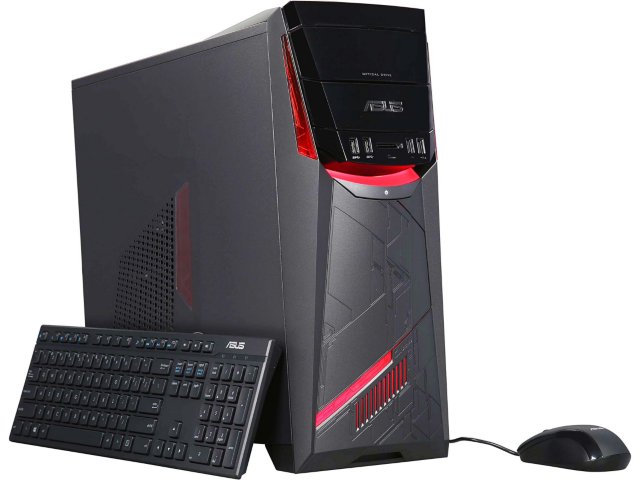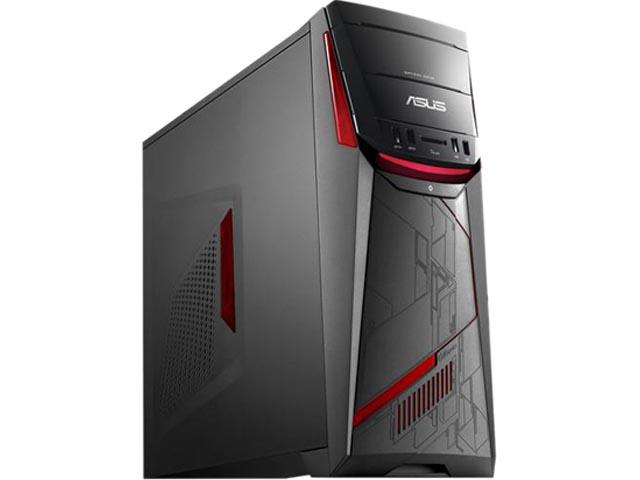Asus Preps Its G11 Gaming Desktops For VR With GTX 10-Series GPUs
Asus announced that its G11 gaming desktop line has been updated with new Nvidia Pascal 10-series graphics cards in support of VR gaming.
Asus launched the first G11 gaming desktops in the second half of 2015, so the systems were already equipped with relatively newer hardware. All G11 systems come with either an Intel 6th Gen (Skylake) Core i5 or Core i7.



Prior to today’s announcement, Asus offered the G11 with five different graphics cards: Nvidia GeForce GTX 950, 960, 970, 980, AMD Radeon R9 380. Although these graphics cards are more than capable of running today’s PC games, they may struggle to run games in VR. This motivated Asus to add Nvidia’s Pascal GeForce GTX 1060, 1070, and 1080 as graphics card options for the G11. These cards are generally more powerful and feature several new VR gaming features such as Simultaneous Multi-Projection that significantly increases performance while running VR titles.
Asus said that the updated G11 systems also take advantage of Nvidia VRWorks to enable low latency plug-and-play support for the latest VR headsets. They also come with Asus’s Aegis II software, which features the company’s GameAlive software for recording, editing, and sharing gameplay content.
The G11 desktop with the GTX 1080 is available now at Newegg for $1,799.99, and the GTX 1070 version is available for $1,199.99. The GTX 1060 model is priced at $999.99, and you can preorder it now, but it won’t be available until November 2.
| Asus G11 Gaming Desktop - Pascal Models | |||
|---|---|---|---|
| Model | G11CD-EH51-GTX1060 | G11CD-WB51-GTX1070 | G11CD-DB72-GTX1080 |
| CPU | Intel Core i5-6400 (2.7 GHz) | Intel Core i5-6400 (2.7 GHz) | Intel Core i7-6700 (3.4GHz) |
| GPU | Nvidia GeForce GTX 1060 | Nvidia GeForce GTX 1070 | Nvidia GeForce GTX 1080 |
| RAM | 8GB DDR4 | 8GB DDR4 | 16GB DDR4 |
| vRAM | 6GB GDDR5 | 8GB GDDR5 | 8GB GDDR5X |
| Storage | 1TB HDD | 1TB HDD | 512GB SSD |
| PSU | 500W | 500W | 500W |
| OS | Windows 10 Home 64-bit | Windows 10 Home 64-bit | Windows 10 Home 64-bit |
| Release Date | November 2 | September 23 | September 23 |
| Price (Newegg) | $999.99 | $1,199.99 | $1,799.99 |
Get Tom's Hardware's best news and in-depth reviews, straight to your inbox.
-
Jeff Fx I just upgraded from a 970 to a 1080, and VR is greatly improved in most games, but I wish I'd gotten a Pascal Titan X, because max settings in some games can be too much for the 1080, causing frame drops.Reply -
negusp "I just upgraded from a 970 to a 1080, and VR is greatly improved in most games, but I wish I'd gotten a Pascal Titan X, because max settings in some games can be too much for the 1080, causing frame drops."Reply
Entitled bastard. The Titan is 10% faster in almost all scenarios. The 1080 is almost twice as fast as a 970, and you wish you got a Titan? GTFO -
Khimera2000 " just upgraded from a 970 to a 1080, and VR is greatly improved in most games, but I wish I'd gotten a Pascal Titan X, because max settings in some games can be too much for the 1080, causing frame drops."Reply
I'm good on the Titan X, I can wait for the 1080 TI when it eventually gets release, should have close performance with a much more palatable price point.
I have a 980 TI and it runs everything pretty well, looking at its performance I can probably wait for next years refresh. I like the fab shrink, but I really want something with HBM. I'll wait till next cycle and hope there's a consumer model from both companies that has this feature, then make my choice. I'm not seeing games taking advantage of these new features for the next couple of years any how. -
razor512 Going with their prebuild, means at the starting point, you have a price premium of $200 over building it yourself, and that premium increases with each stage about $370 over the cost to build an equivalent system yourself.Reply
I don't get why these companies increase the price premium for more expensive systems that have a similar component count.
It doesn't cost more to have a worker connect a SATA cable to a 512GB SSD, than it does to connect the same cable to a 7200RPM HDD.
Overall, at the higher end, a user is better off possibly getting 2 GTX 1070s for SLI (for non-VR gaming), or doing a 1080 build, but with a i7 6700k, and liquid cooling for better overclocking.


